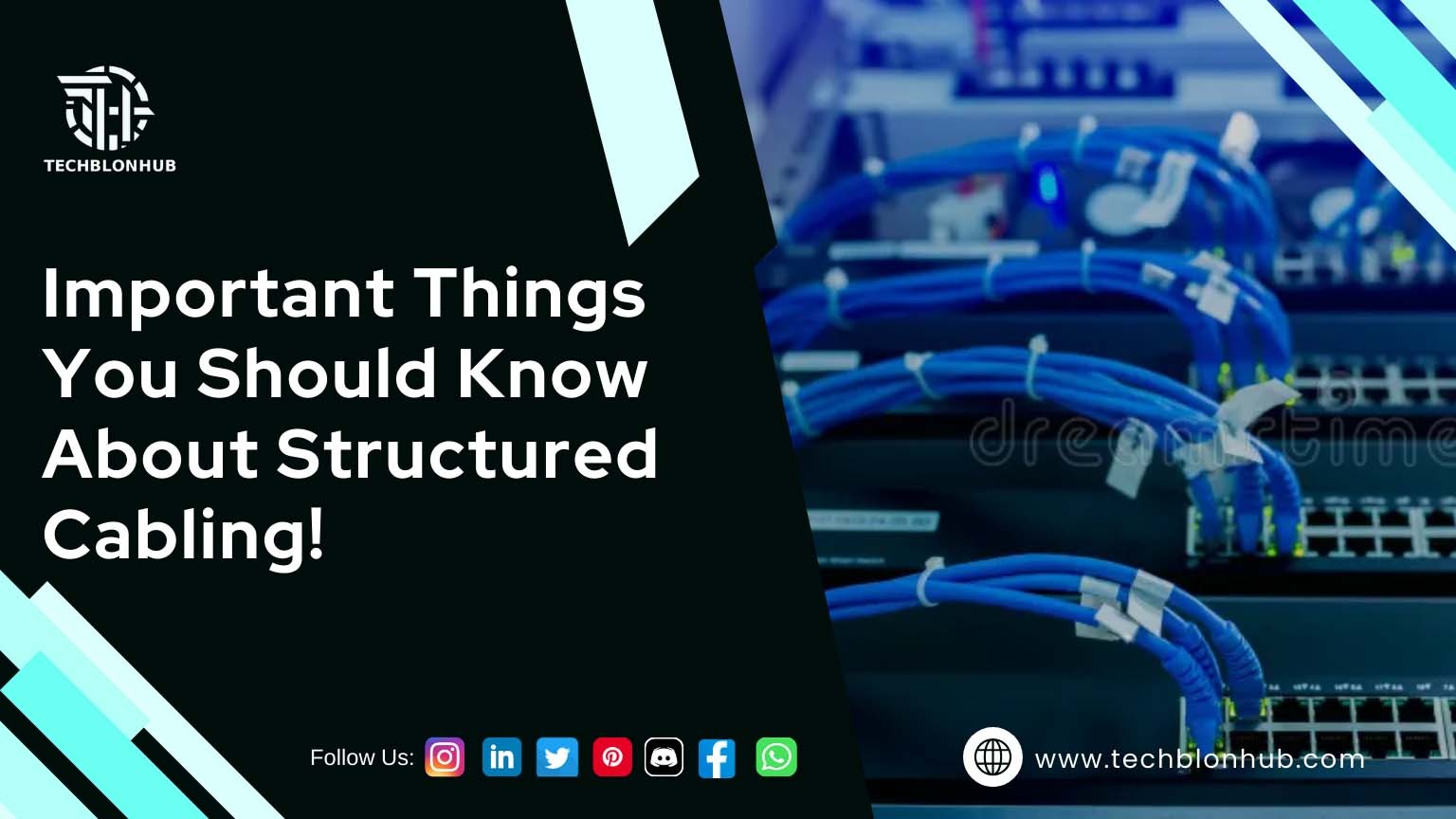The voice and data cabling system in your workplace forms the foundation of your organization, connecting all components of your company’s technology structured wiring installation.
Without a fully operational network, employees may struggle to collaborate on projects or perform tasks efficiently. Therefore, structured cabling services equip your company with the necessary cabling infrastructure, management, and technology to handle networked resources effectively.
In this discussion, we will explore why you should implement a structured cabling system to connect your organization.
What is Structured Cabling?
Structured cabling organizes network wires in a commercial environment. The main goal is to consolidate all the company’s networking cables in one location, which makes it easier to replace or assess them when needed.
Moreover, color-coding and labeling cables according to the type of data they carry simplify troubleshooting and connection adjustments.
What are the different elements that make up a structured cabling solution?
- Entrance Facilities (EF)
Entrance facilities serve as the points where external connections, such as fiber optics and broadband, enter the premises and connect to your internal network wiring.
In this area, you will find network limit points, cables, connecting devices, security equipment, and other network devices that link to your private network cabling or access provider (AP). Additionally, these components ensure seamless communication between your external and internal networks.
- Equipment Room (ER)
The Equipment Room serves as a climate-controlled area where you store vital telecommunications equipment, such as servers and switches. Additionally, this environment protects sensitive devices from temperature fluctuations and dust, ensuring optimal performance.
- Backbone Cabling
Backbone cabling, also known as horizontal cabling, links various parts of your facility to the network infrastructure.
It connects locations on the same level, between floors, or even between different buildings on campus. Additionally, backbone cabling can include any form of cable, from Ethernet to fiber to twisted pair.
Keep in mind that the maximum cable run length is 90 meters, plus 10 meters for patch cables, resulting in a total of 100 meters.
- Telecommunications Enclosure (TE) or Telecommunications Room (TR)
Telecommunications Rooms and Telecommunications Enclosures serve as climate-controlled areas where you terminate horizontal and backbone cables to your connected hardware and telecommunication equipment.
Additionally, patch cables, jumpers, splice closures, and connection hardware are included in a TR or TE.
You will typically find TRs on each floor of a multi-story building. Moreover, a distribution point that serves a specific area within a structure is referred to as a TE. A large complex may have multiple TEs on each level.
- Horizontal Cabling
Horizontal cabling components link core wiring in TRs or TEs to endpoint equipment in Work Areas.
This cabling typically runs beneath the floors, overhead, or in cable trays. Furthermore, the tray design proves to be the cheapest to install and the most convenient for repairs, updates, and diagnostics.
Additionally, horizontal cabling eliminates extraneous cable masses, resulting in streamlined, tidy network wiring and improved airflow for network devices in equipment cabinets.
- Work Area (WA)
Work Areas represent the final element in a structured cable system. You employ endpoint devices in these areas. Specifically, a Work Area could be any place with an appliance or gadgets that require network connectivity.
What is the significance of structured cabling?
Structured cabling systems differ from conventional point-to-point cabling systems by eliminating the chaotic masses of wiring commonly found in most workplaces. In addition, the following are some of the advantages:
- Cost-Effectiveness
Structured cabling helps your company save money by lowering installation costs, maintenance expenses, and energy consumption.
- Less Interruption
Structured cabling solutions reduce human blunders in network connection management, which can cause delays and business disruptions. Additionally, structured cabling allows for a well-organized cable map with easily distinguishable connectors.
- Efficiency in Operations
Structured cabling offers a straightforward and elegant cable organizing system for IT staff, making moves, additions, and modifications (MAC) quickly and cheaply. In a structured cable system, the setup and repair time are decreased greatly.
- Increased Efficiency
By maintaining the wiring and cable connections for each device on your network, structured cabling can increase network speed and efficiency.
- Scalability
A structured cabling system will be considerably more convenient for your firm to grow. Adding new users, devices, or technologies takes a fraction of the time, allowing you to get started rapidly with no downtime structured wiring installation.
When to consider a structured cabling solution?
There are a variety of circumstances in which firms will require these services. If your company is planning to shift, now is a good time to invest in structured cabling so that everything is set up and prepared in your new facility before you move in.
A structured cabling solution can provide everything your company needs to keep running seamlessly and expand efficiently if your company’s technology advances or you outgrow your current cabling infrastructure.
To sum it up
As technology advances, it’s more important than ever for businesses to have a robust voice and data-organized cabling solution.
Your company will face difficulties if it is behind in the networking department. This includes the absence of connectedness to which many employees have become used in today’s workplace structured wiring installation.
A structured cabling service can help your company create an organized and effective cabling architecture that will enhance network efficiency, increase operational efficiencies, and avoid delays for upkeep, MACs, and updates.




2 comments
Pingback: Expert Network Cabling Services for Reliable Connectivity
Pingback: Dell Server Builder: Customize Your Perfect Server Solution